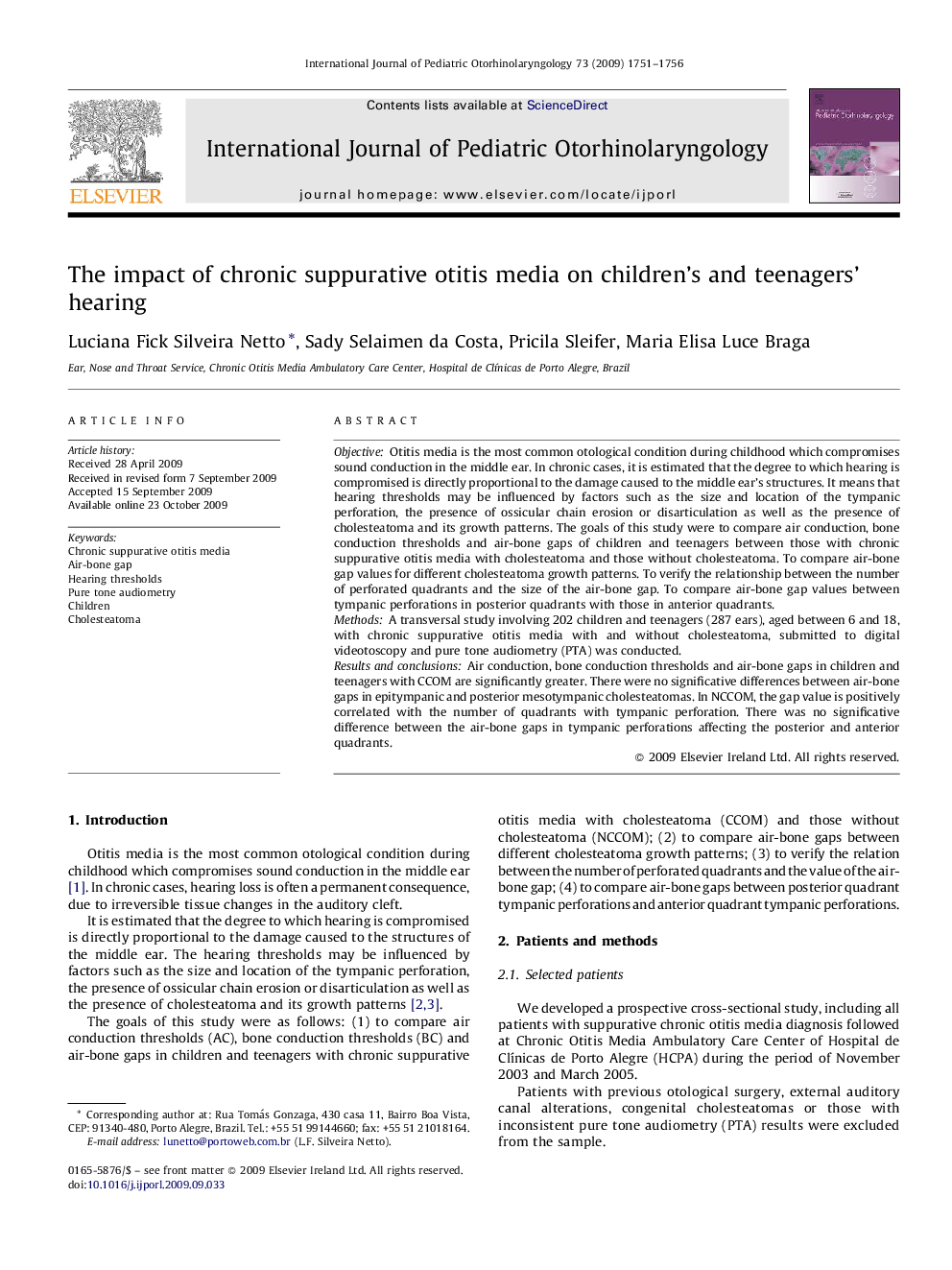| Article ID | Journal | Published Year | Pages | File Type |
|---|---|---|---|---|
| 4114806 | International Journal of Pediatric Otorhinolaryngology | 2009 | 6 Pages |
ObjectiveOtitis media is the most common otological condition during childhood which compromises sound conduction in the middle ear. In chronic cases, it is estimated that the degree to which hearing is compromised is directly proportional to the damage caused to the middle ear's structures. It means that hearing thresholds may be influenced by factors such as the size and location of the tympanic perforation, the presence of ossicular chain erosion or disarticulation as well as the presence of cholesteatoma and its growth patterns. The goals of this study were to compare air conduction, bone conduction thresholds and air-bone gaps of children and teenagers between those with chronic suppurative otitis media with cholesteatoma and those without cholesteatoma. To compare air-bone gap values for different cholesteatoma growth patterns. To verify the relationship between the number of perforated quadrants and the size of the air-bone gap. To compare air-bone gap values between tympanic perforations in posterior quadrants with those in anterior quadrants.MethodsA transversal study involving 202 children and teenagers (287 ears), aged between 6 and 18, with chronic suppurative otitis media with and without cholesteatoma, submitted to digital videotoscopy and pure tone audiometry (PTA) was conducted.Results and conclusionsAir conduction, bone conduction thresholds and air-bone gaps in children and teenagers with CCOM are significantly greater. There were no significative differences between air-bone gaps in epitympanic and posterior mesotympanic cholesteatomas. In NCCOM, the gap value is positively correlated with the number of quadrants with tympanic perforation. There was no significative difference between the air-bone gaps in tympanic perforations affecting the posterior and anterior quadrants.
